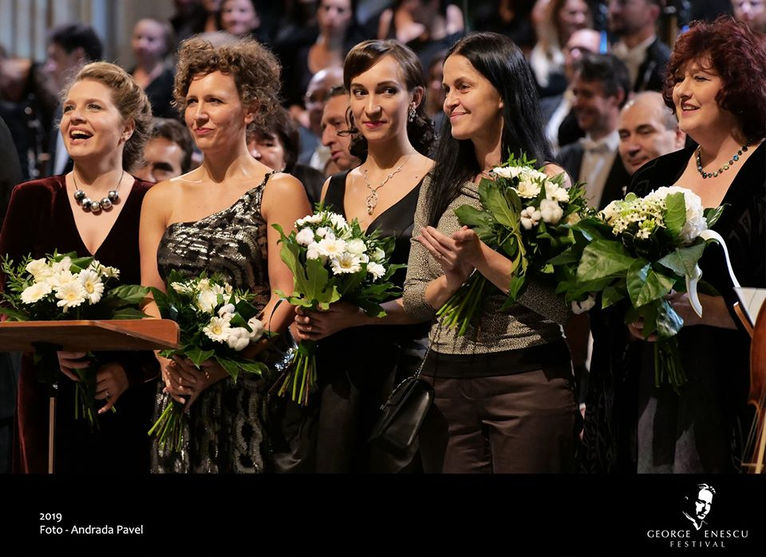


MOSES and ARON
Arnold Schoenberg
Dodecafonic contemporary opera
In the visual scenario created together with the architect and visual artist Peter Košir, we started from the conflict between thought and word, idea and its representation, between transcendence and immanence. The image, together with its interpretation, can become an instrument of manipulation in politics and religion.
Nona Ciobanu



GEORGE ENESCU International Festival
SEPTEMBER 2019
GEORGE ENESCU PHILHARMONIC ORCHESTRA and CHOIR
VOCALCONSORT BERLIN
LOTHAR ZAGROSEK
conductor
IOSIF ION PRUNNER
chorus master
NONA CIOBANU, PETER KOŠIR
multimedia directors
Foto Gallery

Cast
ROBERT HAYWARD
Moise (speaker)
JOHN DASZAK
Aron (tenor)
JULIA SPORSÉN
young girl (soprano)
MICHAEL PFLUMM
young boy (tenor)
CATHERINE WYN-ROGERS
sick woman (alto)
CHRISTIAN RIEGER
man (baritone)
GABRIEL ROLLINSON
Ephraimite (bass)
MICHAEL PFLUMM
young boy (tenor)
RALF LUKAS
priest (bass)
POLINA PASZTIRCSÁK
second naked virgin (soprano)
ANNA NEDOREZOVA
third naked virgin (alto)
CATHERINE WYN-ROGERS
forth naked virgin (alto)
Awards
Moses und Aron, the opera in concert performance which brought the George Enescu Festival its first International Opera Awards nomination, in 2020.
Reviews
THE 2019 ROMANIAN PREMIERE OF MOSES UND ARON BY ARNOLD SCHOENBERG – A MUSICAL MANIFESTO ON THE OPPOSITION BETWEEN THOUGHT AND ACTION, AT #ENESCUONLINE
One of the masterpieces of 20th-century opera, Moses und Aron by Arnold Schoenberg premiered in Romania at the 2019 George Enescu International Festival, performed by the George Enescu Philharmonic Orchestra and Choir conducted by Lothar Zagrosek, and Vocalconsort Berlin with Iosif Ion Prunner as chorus master. The production featured a stellar lineup of internationally acclaimed artists, with Robert Hayward (Moses) and John Daszak (Aron) as cast headliners. The opera was staged with multimedia projections created by Nona Ciobanu and Peter Košir, which outlined with visual subtlety the powerful narrative.
Moses und Aron, an unfinished opera, is the last and most imposing lyric work composed by Arnold Schoenberg (1874-1951), for which the musician wrote the libretto himself. A biblical drama written as a dodecaphonic opera that calls into question the classical tonal language, the piece is so complex and audacious that it presents a major challenge for artists in staging and performing it. Moses und Aron has became known for its insistence on questioning existence itself, as its two Biblical characters, Moses and his brother Aaron, symbolize the opposition between Thought and Action in a period dominated by the political upheaval that ended in Nazi savagery (Schoenberg wrote the first two acts in 1930-1932).











































